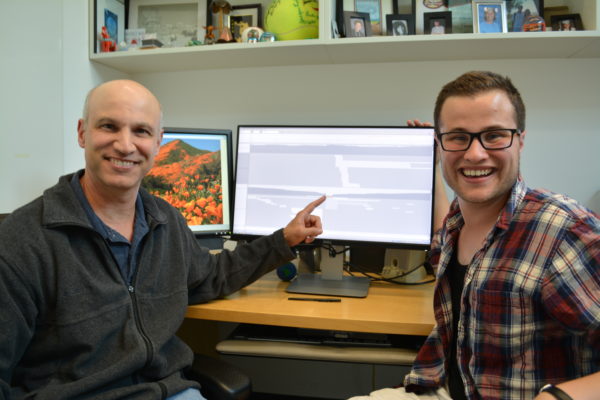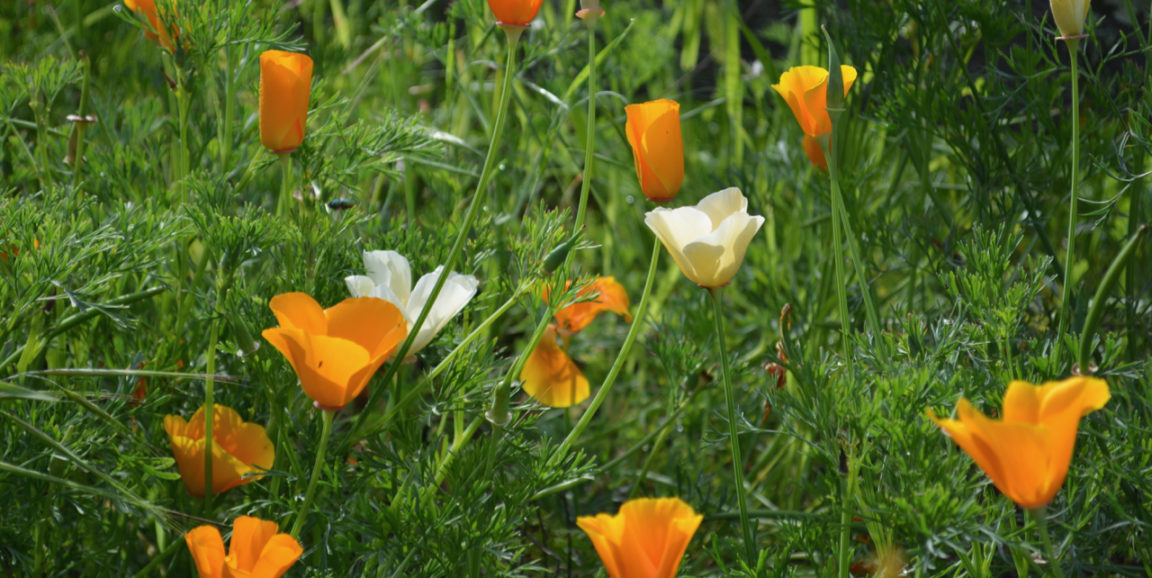Every spring, Jonathan Pollack's commute to work gets a little brighter and a little oranger. Flanking the roads leading to Stanford's campus, where Pollack works as a professor of pathology, are splashes of the California state flower's famously brilliant hue -- save for a small handful of poppies that are oddly robbed of their color.
"My son, who is a student at Stanford, and I will sometimes head up to campus together, and for a couple years now, we've noticed this odd variation in poppy color, where they're completely white, or sometimes yellow," said Pollack, MD, PhD. "It just struck us as very unusual that there was this sort of mutant-looking flower growing among the normal orange, golden variety."
Both scientists by training, Pollack and his son, Andrew got to talking. "I'm a genomics guy, and Andrew was exploring bioinformatics at the time as a computer science major, and we thought, 'You know, I bet we could figure this out.'"
Now, detailed in a paper that appears in Scientific Reports, the father-son team has done just that, finding a specific mutation that drains color from the poppy petals and leaves them white. And although plant biologists and poppy enthusiasts alike have known that poppies can be white or yellow, the Pollacks' finding is the first to show how, at a genetic level, that happens. Andrew Pollack is the lead author, and Jonathan Pollack is the senior author.
To sort out the mystery of the mutant poppy, Jonathan took a page from his lab, employing tactics he usually uses to analyze cancer genomes.
Jonathan and Andrew's part-horticulturist-part-detective quest took them through a series of steps, starting with a bit of field work -- sampling poppies from Stanford's campus (with permission of course). After carefully preserving the flowers and bringing them back to the lab, they ran a genomics analysis known as RNA sequencing, which revealed two important things: which genes are active in the flowers, and any active genomic oddities -- like something that could desaturate a bright orange petal.
The sequencing analysis showed that there's one very specific mutation in a gene that supports the formation of carotenoids, the pigment that turns vegetation an orangish hue.

The mutation disabled the proper function of this gene, which is the first in a sequence of genes that helps produce the orange look of carotenoids. With the gene out of commission, the pigmentation never comes in. In some instances, however, the petals actually find a middle ground -- yellow. Poppies carry two copies of every gene: Those with two normal copies are orange, those with one normal and one mutant are yellow, and those with two mutant copies are white.
"My original suspicion was that the white variety would all harbor some kind of mutation, likely of the same gene, but that they would be independent of each other," Jonathan said. "And it turns out when we sequenced a handful of what we thought were these wild outcroppings of poppies, every white flower had the exact same mutation, in the exact same gene." Surprised by the predominant mutation, Jonathan and Andrew sampled a few more flowers across the Bay Area, finding again, that the same mutation persisted.
Jonathan suspects the genomic sameness is due to commercial poppy distributors that cultivate new poppies using a seed line that contains this mutation -- and that there's likely been a commercial "contamination" in landscapes that would seem wild, such as poppies that pop up along highways or in the suburbs.
"I think one of the take home messages for us is the power of genomics technologies -- here's a variant that's been described for more than 100 years in poppies, and no one really knew what caused it," said Jonathan. "But by applying the same techniques we use to analyze tumors, we were able to figure it out. In our case, the poppy is one of the most culturally significant flowers in California, but this type of approach could be really useful for plants that are agriculturally important or cases that are medically important too."
Photos courtesy of Jonathan Pollack




